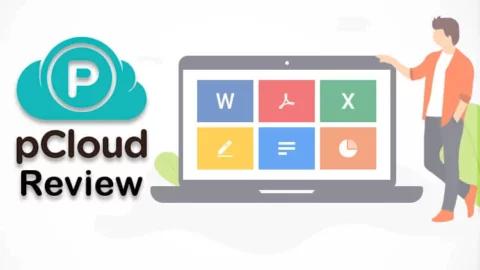Azure users are moving to Microsoft’s latest release of Azure VMs (virtual machine) for rapid provisioning of on-demand infrastructures for high-performance computing. The HBv3 virtual machine has improved its high-performance capabilities by adopting AMD EPYC 7003 series processors that deliver:
- Up to 19% higher performance per core
- Up to 1.9 times higher performance for workloads with large-scale message-passing interfaces
- Up to 2.6 times higher performance for lightly-threaded workloads
This Azure release provides HPC users with the flexibility to manage their resources and achieve higher performance. So, what does this release mean for the future of HPC and specifically Microsoft’s role in the growing HPC market?
According to Sean Connery with Orbis Solutions in Las Vegas, “Microsoft is delivering on its promise to become the number one cloud provider in the market.”
What do these new VM rollouts tell us about Microsoft’s strategy?
Amazon owns the cloud computing market, but Microsoft is gaining ground making for a head-to-head competition with the current leader in cloud computing. Enterprises use a multi-vendor cloud strategy to avoid vendor lock-in; however, most will have a preferred vendor. All providers are competing for that preferred vendor designation.
Cloud providers know that the more resources companies have in a provider’s cloud, the more difficult it is for them to change providers. This situation is especially true in the HPC market, where setup and configuration require a delicate balance of resources. It would appear that Microsoft’s latest HPC release indicates an ongoing pursuit of large institutionalized enterprises.
What are the key use cases for HPC VM launches?
HPC in VMs provides higher performance for high-quality modeling and simulations in industries such as healthcare. The improved capability allows HPC to solve complex problems in areas such as financial or environmental modeling within shorter time frames.
Connery recently pointed out that companies leveraging AI and ML to solve tough mysteries require performance and security for extremely demanding workloads. Those scenarios are what HPC in VMs address.
Regulatory
Regulatory requirements increase the design complexity in areas such as energy consumption and safety. At the same time, engineers face a growing demand for reduced production costs. HPC enables companies in industries such as aerospace and defense to create accurate models and simulations during the design phase to minimize the need for physical testing.
Research
Government agencies, universities, and research facilities benefit from HPC solutions. Traditional methods were time-consuming and added complexity with increasing simultaneous testing of more variables. HPC can reduce the time and complexity required for simulating hypothetical situations. Creating a time-lapsed model for protein dynamics can expedite the development of therapeutics.
Modeling
HPC offers data scientists the ability to analyze data for more precise computer modeling. Researchers can use analytical tools and machine-learning frameworks to model complex environmental outcomes. With the capability to use more data for modeling, financial and risk-management analyses can produce more accurate results, leading to better economic outcomes.
Healthcare
Microsoft has focused on the healthcare sector, partnering with organizations looking to leverage artificial intelligence (AI) and machine learning (ML) to solve medical problems. Not only does the sector require high performance, but it also requires protecting sensitive healthcare information.
The widespread adoption of electronic health records has increased the need for highly secure processing environments. Digital imaging, medical IoT, and mobile devices have added to the structured and unstructured data that is needed to address individual healthcare outcomes. HPC solutions provide the performance capabilities to synthesize data to provide a comprehensive view of patient data.
Artificial intelligence is growing in acceptance within the medical sector. AI image recognition helps medical professionals diagnose diseases such as cancer. Similar systems have reduced the overwhelming workload in the healthcare sector. With the computing capabilities of HPC solutions, a healthcare platform could be created to help medical professions deliver more precision medical outcomes.
How are Microsoft partners and customers using new VM offerings?
The latest Azure HBv3 allows organizations to consolidate their workloads. This consolidation provides opportunities to reduce costs that result from workload sprawl. With its flexibility, Azure VMs can help smaller organizations with extensive workloads to create a minimum viable product (MVP) quickly and at a lower cost, shortening the time-to-market. Microsoft partners are leveraging the flexibility of Azure’s VM capabilities to deliver more customized solutions to their HPC customers.
Microsoft’s fortuitous launch of its AI for Health program in January of 2020 created another avenue for the deployment of its Azure solutions. Microsoft provided 180 grants to companies to accelerate medical research, address health inequities, and build research capabilities. These companies were given access to Azure HPC, ML, and business intelligence (BI) solutions to accelerate their research into COVID-related activities.
What is the significance of the new options for Oracle WebLogic?
Oracle WebLogic Server 14c addresses the deployment of applications in a cross-platform environment. The latest release provides access to more management tools. It now integrates with Docker for containers and extends Kubernetes support for complex applications.
The addition of cross-platform capabilities indicates a strategy designed to attract a portion of the growing cloud computing market. Expanding its support for containers and Kubernetes, Oracle is signaling an agnostic approach to cloud providers.
How will VM offerings for Azure continue to change going forward?
Microsoft’s VM solutions create a flexible structure that can scale with an organization. Small- to mid-sized customers can break into the HPC ecosystem without increasing their costs significantly. By attracting customers at the beginning of their growth, Microsoft creates that “sticky” relationship that can keep it as the preferred vendor.
Simultaneously, the Azure VM solution allows Microsoft to compete with Amazon in the enterprise space of HPC. Its close relationship with partners, especially within the healthcare sector, provides another avenue for growth. Given that healthcare is projected to be one of the fastest-growing fields, pursuing healthcare through established relationships should position Microsoft as a viable competitor in the cloud-computing ecosystem.
Mr. Connery suggests that Microsoft may continue to leverage HPC systems with hyperscale and transition away from lower-powered VM offerings. With that move, customers will be able to migrate to faster workload offerings at the same or lower cost, making the push to the cloud for small and mid-sized customers more attractive.










